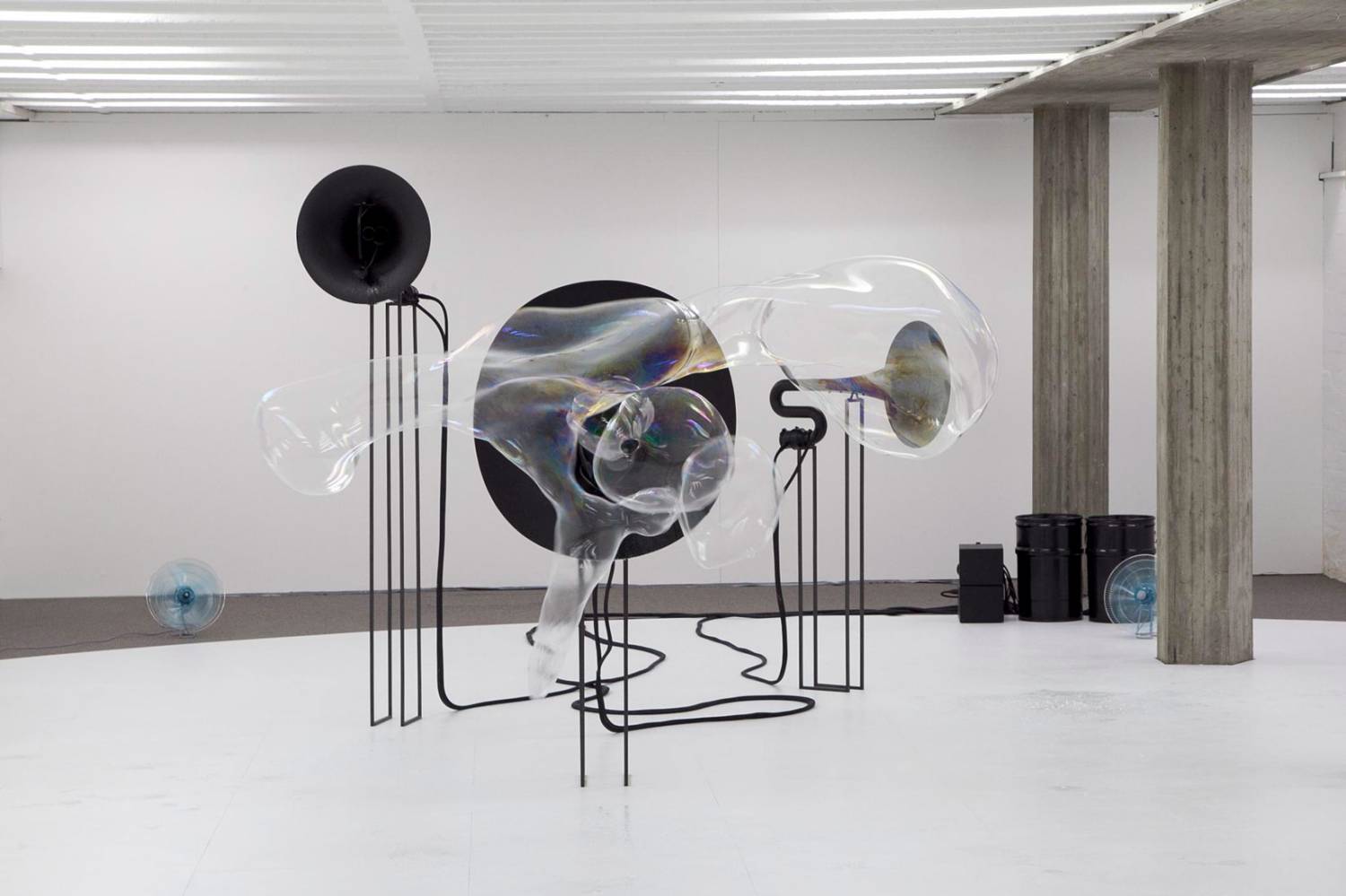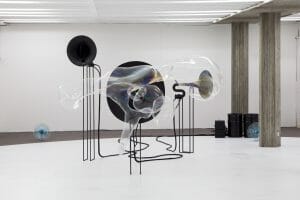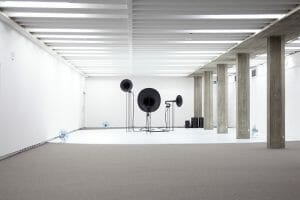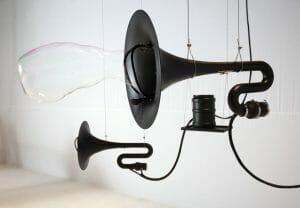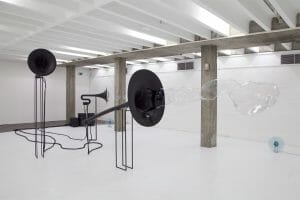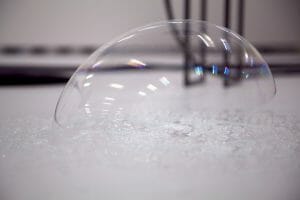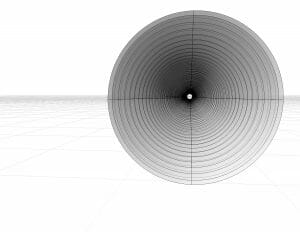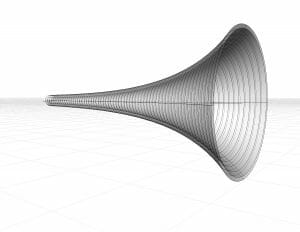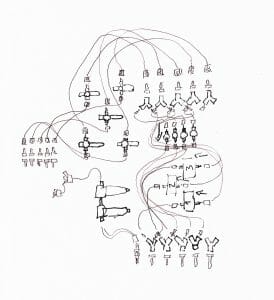What kind of relations exists between oscillating air, black holes and soap bubbles? What effect does the sound of horns have on the human psyche and why is it present in various creation myths? What impact does gravity have on our collective consciousness? Where do spectacle and contemplation meet? Black Hole Horizon is a meditation on a spectacular machine that transforms sound into three-dimensional objects and keeps the space in steady transformation.
The nucleus of the installation is the invention of an apparatus resembling a ship horn. With the sounding of each tone, a huge soap bubble emerges from the horn. It grows while the tone sounds, peels off the horn, lingers through the exhibition space and finally bursts at an erratic position within the room.
The complete installation comprises three horns that vary in size and form according to their individual pitch and timbre. Visitors can walk through the room witnessing the transformation of sound into ephemeral sculptures, which last only for seconds before their material remains are deposited on the walls and floor.


